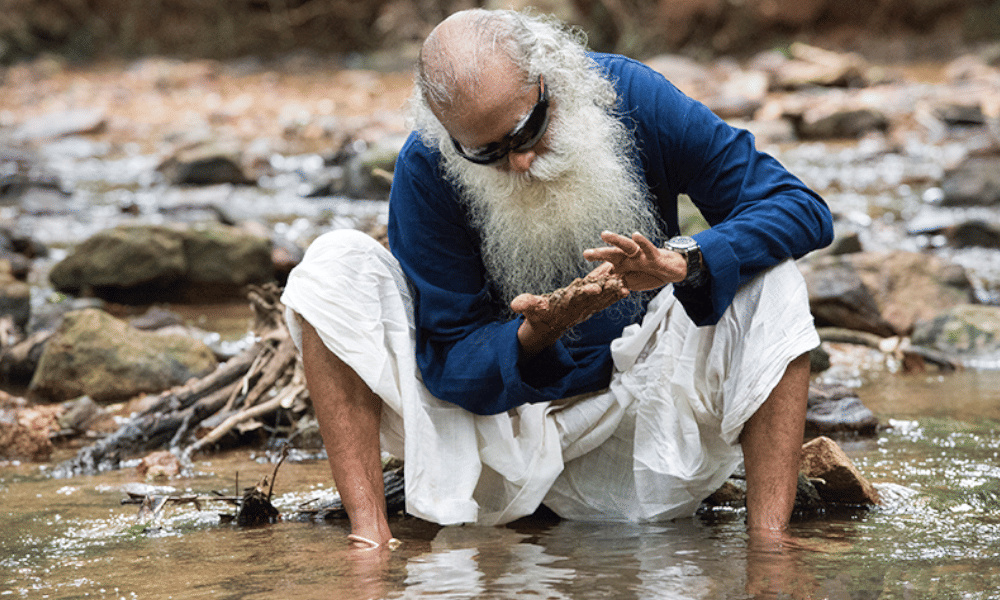>
Cauvery Calling>
Blogs>
From the Founder>
River Interlinking Will Not Solve India’s Water Problems
Share
River Interlinking Will Not Solve India’s Water Problems
From the Founder
17 Aug 2019
06:28 am
With some parts of India in drought and others in flood, river interlinking seems like the obvious solution. Sadhguru explains how this could spell disaster for India’s rivers.

Sadhguru: The idea of river interlinking first came in 1858, when an English officer, Sir Arthur Cotton – who built the two dams on the Krishna and Godavari – first talked about it. The idea was to link rivers that have more water supply to water-deficit rivers through canals. But the science of river hydrology has come a long way since then. He came from an experience of rivers in England and Europe, which are of a different nature from Indian rivers, in the sense, the variation in European river water levels is very small over the year. Generally, for rivers in Europe, the variation is not more than 20% at any time of the year. But in India, the variation can be over 80%. If you look at the river in the monsoon and then in the summer, you will not recognize it.

Image Credit: Proposed Inter Basin Water Transfer Links, Indiawaterportal
This idea that there is excess river water and deficient river water is wrong in a tropical country because right now, when the rains come, the rivers flood. Once the rains are over, there is no water in the rivers. Building check dams and rainwater ponds is fine for immediate purposes in the short-term. In the long-term, we need to ensure that water does not end up in the river quickly. For this, there must be natural vegetation on the land – there is simply no other way.
The economic cost of river interlinking is also huge. And especially if we are going to build thousands of kilometers of canals to transport water from river to river, in a country where temperatures are on average over 35 degrees Celsius, a large proportion of the water is going to evaporate. Moreover, the land is thirsty. Whichever way you build the canal, there is going to be leakage somewhere and the thirsty land will drink the water up.
The problem is, people want to do agriculture where there is no water. There is no logic in trying to grow wet crops in arid lands. Instead of transporting water and then growing paddy or wheat, you can as well transport wheat and paddy after growing it in the places where there is excess water.
The Danger of Rivers Not Reaching the Ocean
Above all, river interlinking is based in this idea that the water flowing into the ocean is a waste. This idea must go. This is very dangerous because without that water flowing into the ocean, you are disturbing the whole water-cycle. The amount of monsoon that you get is directly connected to how much river water flows into the ocean.
Stopping rivers from reaching the ocean will also affect the land along the coasts. If river water does not flow into the ocean, saline intrusion into ground water takes place. For example, in Gujarat, they are losing around 550 square kilometers of land per year to salinity. Salinity is present sixty kilometers inland. India has about 7400 kilometers of coastline. It is estimated that if river water does not flow into the ocean, marine water could percolate into the land up to 100 to 130 kilometers. This means you will lose one-third of Indian geography to marine water. You will not be able to grow a thing in these places.
It has already happened in Gujarat and Tamil Nadu that villages have been completely vacated because there is marine water wherever you put a borewell. Just twenty-five years ago, it was all sweet water.
River linking can have value if it is done judiciously in some places for flood mitigation purposes. In India, the only rivers where we consistently have such an issue are Kosi, Mahanadi and Brahmaputra. If it is necessary in some places, it has to be done in a judicious way, but blatant river linking across the country is not going to work. If we want a sustainable situation, we need to slow down the water moving from soil to river. Vegetation is the only answer for this.

Related Stories
In Focus: Sadhguru at COP29
13 Feb 2025
05:28 am
From impactful discussions to electrifying moments at the United Nations Framework Convention on Climate Change (UNFCCC) COP29 in Baku, Azerbaijan, watch Sadhguru captivate global leaders with a bold vision for ecological restoration and a call to action that resonates beyond borders.
Empowering 34,000+ Farmers in Karnataka and Tamil Nadu through Cauvery Calling WhatsApp Groups
21 Nov 2023
07:50 am
Cauvery Calling is supporting over 34,000 #farmers daily via WhatsApp groups in Karnataka and Tamil Nadu to help them transition to #treebasedagriculture. Topics include model farmer videos, event updates, timber selection tips, and planting methods based on soil type, depth, salinity, etc.
Award-Winning Innovation: From Monocrop to Food Forest
17 Dec 2024
04:16 am
Discover how Mr. Valluvan transformed a traditional coconut farm into a thriving food forest, earning global recognition at UNCCD COP16 and the World Soil Day 2024 Farmer Contest. Click to explore his inspiring journey!
Keep In Touch
Get the latest Cauvery Calling updates delivered to your inbox.
